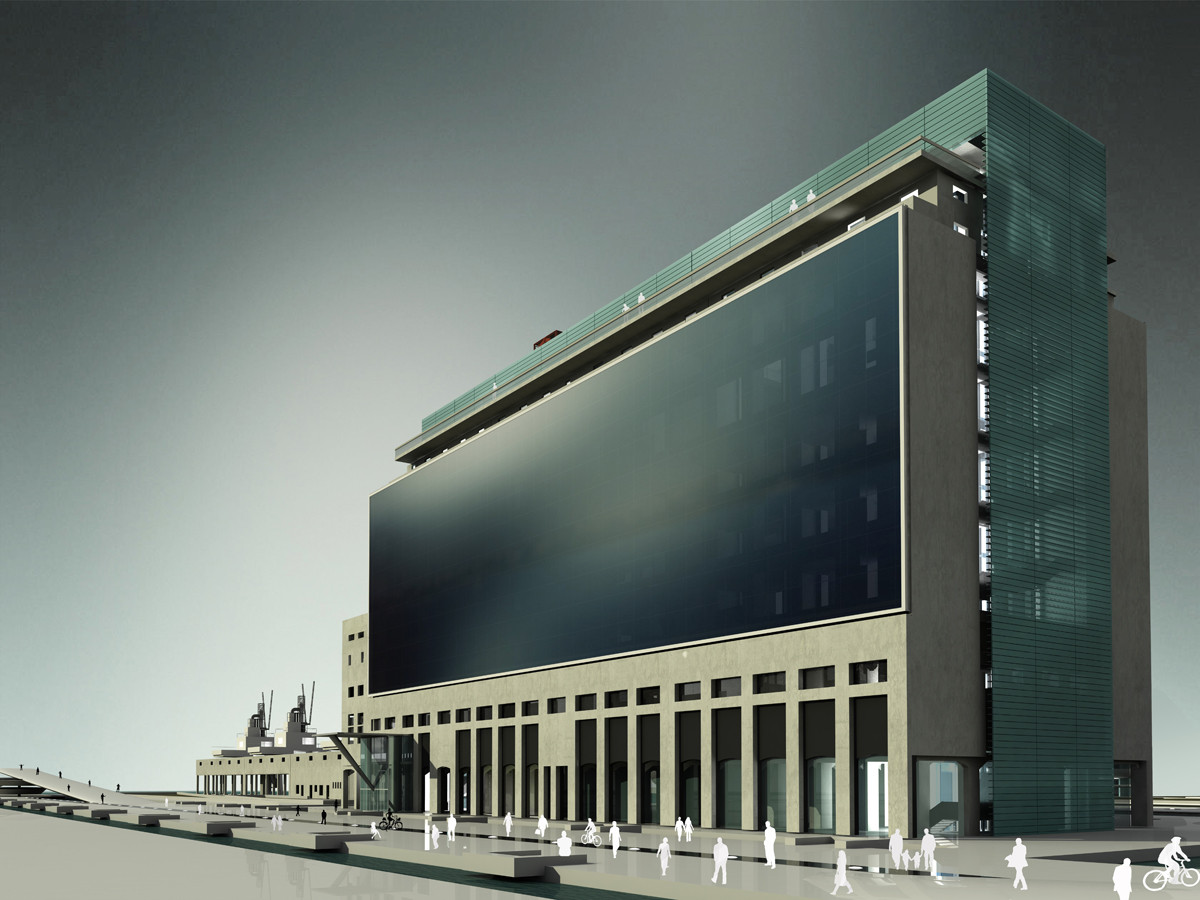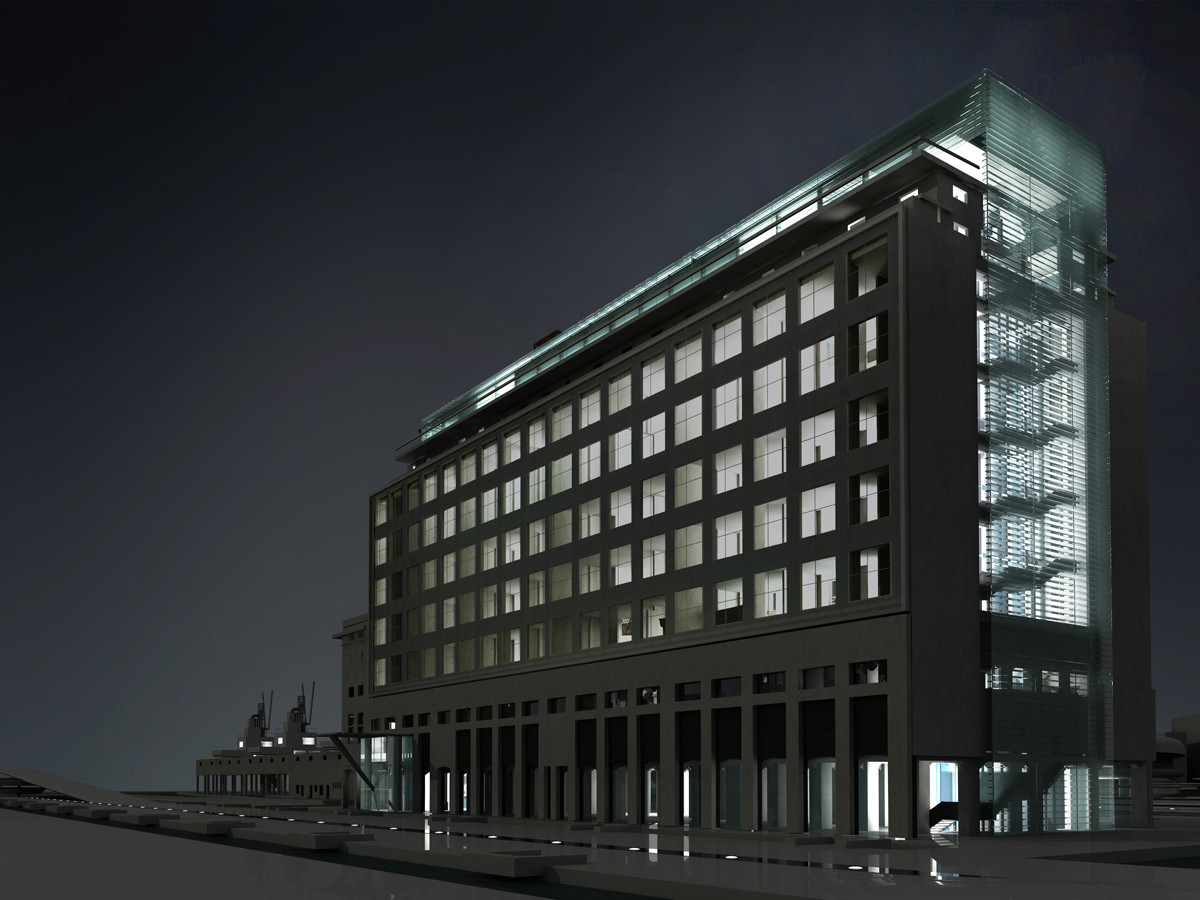
Designed by d-code Architects, the proposal for the Museumof Underwater Antiquities is a synthesis of a building characterized by orthometrical simplicity with incorporated high-tech components and a surrounding area of curved and parabolic shaped paths, installations and water parks. Given the importance of the two subjects of the museum building and its surroundings, the overall effect is presented as arythmological dialogue between linear building solidity and environmental curving fluidity. More images and architects’ description after the break.

The architecture of the museum is presented as a combination of two basic elements: on one hand, the contemporary approach of museum design, that proposes a unified supervision of the museum interior combined with an energy efficient technological shell that complements the buildings’s aesthetical minimalism. In this way, the term of transparency is induced to support conceptually the character of the Museum, with the creation of selected openings in the shell.

The interior of the building is opened by a main space at the height of the old cells 25.00 m) which is the core of developing showrooms around it..Furthermore, it extends vertically with the addition of an extra floor made of light steel structure with a shaded translucent covering.The exterior of the building is coated by a shell that combines bare concrete at the bottom forming two floors of arched corridors, u-glass type sun-protecting strips in the roof and in the side elevations and finally two photovoltaic solar glass curtain walls n both longitudinal sides.

The architecture of the environment includes buildings for public-use, pedestrian paths, water parks, large vertical communication knots and amusement/game parks. A central axis is formed to give access to the museum and the adjacent buildings, a twin ramp lifted on its ends, surrounded by small sitting areas, all incorporated on a water canal.The main idea is the development of water parks,in which small islands are intergrated as restaurants,bars and cafes and pedestrian paths combined with perfectly flat plain squares illuminated throughout the night from self-powered underfloor lights.

The road networks which are plotted in service of visitors are almost invisible except one spiral bicycle route ribbon which gives the whole landscape morphological cohesion and unifies it aethetically. The plantation is discreet and harmonically spread throughout the public space area and the Museum’s external yard.












